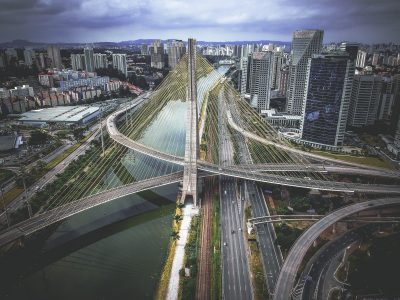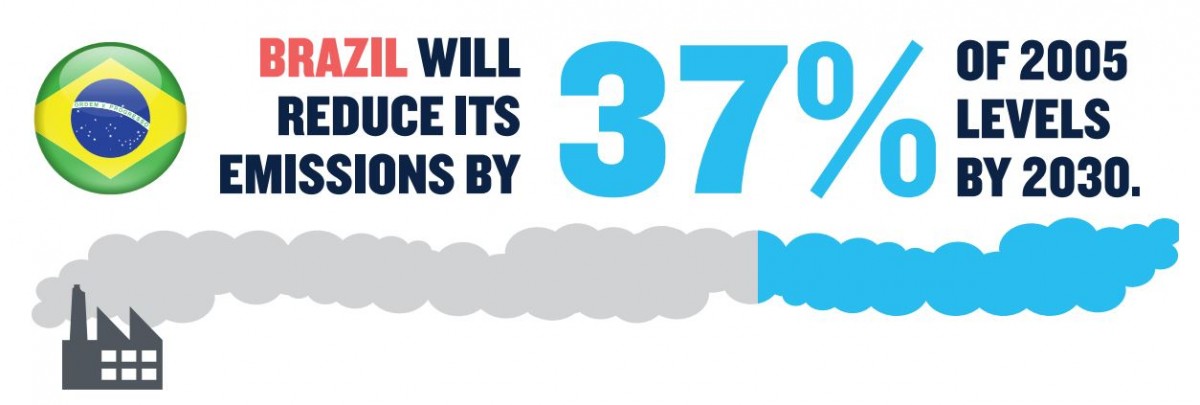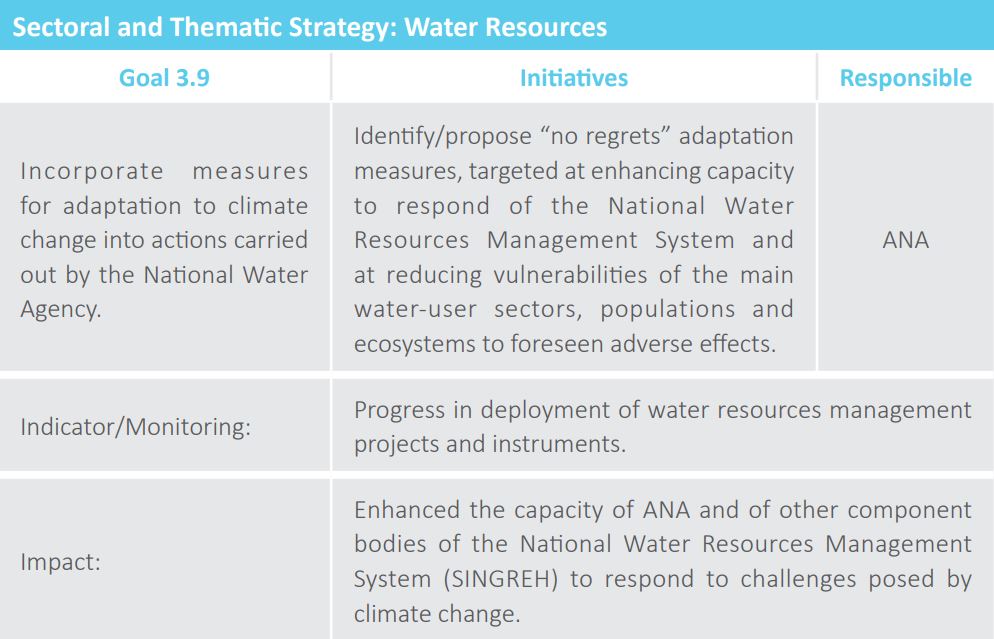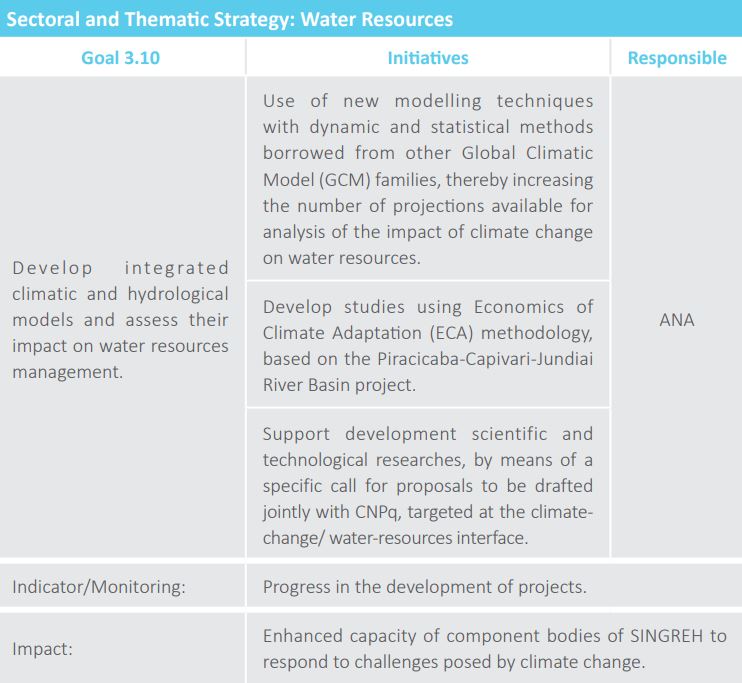Climate is Water: Tackling Brazil’s Growing Water Challenges

According to the Global Carbon Atlas, Brazil is the largest GHG emitter in Latin America and the twelfth-largest in the world at 487 MtCO2 (Metric tons of carbon dioxide), accounting for 1.3 percent of global emissions. It is the largest country with the highest GDP in South America and Latin America.
Brazil has made great advances in the past few decades to reduce its GHG emissions. Through its climate pledge, Brazil was the first major developing country to put forward an absolute emissions reduction goal: a 37 percent cut in greenhouse gas (GHG) emissions from 2005 levels by 2025.
One of the main sources of GHG emissions in Brazil is caused by the illegal deforestation in the Amazon, which affects the water resources availability in the country. Experts have identified deforestation as a major driver of droughts and other serious dry periods in Brazil in the last years.
During the 8th World Forum held in Brasilia, there were many sessions that discussed the effects of climate change on water resources.
Brazil has been experiencing severe droughts in recent decades, causing water crisis in many regions of the country. One example is the drought that occurred in São Paulo between 2014 and 2015. Another great example is the current water crisis that is occurring in Brasília, which hosted the 8th edition of the World Water Forum.
The country, once considered a cradle of water, has 12% of the world’s fresh water available, and now turns its eyes to a scenario where its previously abundant water resources are becoming scarce.
What measures is Brazil taking to address the water challenges related to climate change?
In December 2015, countries across the globe adopted the historic international climate agreement at the U.N. Framework Convention on Climate Change (UNFCCC) Conference of the Parties (COP21) in Paris. The Paris Agreement’s goal is to hold increases in the global average temperature to well below 2°C, to pursue efforts to limit the increase to 1.5°C, and to achieve net zero emissions in the second half of this century.
To achieve this target, countries publicly communicated what post–2020 climate actions they intended to take under the new international agreement, known as their Intended Nationally Determined Contributions (INDCs). Within these INDCS, countries have set specific targets, known as their Nationally Determined Contributions (NDCS).
The Brazilian NDC targets are to achieve a reduction of 37% on the emissions of greenhouse gases by 2025 and of 43% by 2030.
 Source: The road from Paris: Brazil’s progress toward its climate pledge
Source: The road from Paris: Brazil’s progress toward its climate pledge
To achieve this, Brazil has set specific sub-targets:
- To reach zero illegal deforestation and restore 12 million hectares of forests;
- In agriculture, to restore 15 million hectares of degraded pastures;
- To elevate the participation of bioenergy to 18% and renewable to 33% of the energy matrix;
- To improve the infrastructure of roads and bring more innovation to the modes of urban public transport;
- To increase energy efficiency and to use clean technology in industry.
One of the key components the Brazilian government’s plans to meet its obligations under the Paris Agreement was the 2016 launch of the government’s National Adaptation Plan (NAP). The NAP was developed by the federal government in collaboration with civil society, the private sector and state governments. It aims to promote the reduction of national vulnerability to climate change and to manage associated risk.
In the preparation of the NAP, 11 sectors were considered, represented by the competent government agencies. The sectors covered were: Agriculture, Water Resources, Food and Nutritional Security, Biodiversity and Ecosystems, Cities, Disaster Risk Management, Industry and Mining, Infrastructure, Vulnerable Populations, Health and Coastal Zones.
The NAP establishes clear goals and sets a four-year time frame for their execution. The plan sets general and sectoral goals to encourage sectors to develop actions that reduce vulnerabilities more quickly. For example, the goal established by the Ministry of Health, which has committed to expand to 85% the percentage of Brazilian municipalities served by the National Water Quality Program for human consumption (Vigiagua) by 2019.
It created a specific plan of adaptation strategy for water resources which aims to analyze the impacts of climate change on water and its users, identifying adaptation measures to improve the response capacity of water resources management and governance in a scenario of greater climate variability.
Implementation of this NAP should take into account guidelines provided by the National Policy of Water Resources (Law 9433/1997), the National Water Resources Plan (PNRH) and other related policy coordination instruments.
 Source: Strategy for Water Resources – Brazil’s National Adaptation Plan to Climate Change
Source: Strategy for Water Resources – Brazil’s National Adaptation Plan to Climate Change
 Source: Strategy for Water Resources – Brazil’s National Adaptation Plan to Climate Change
Source: Strategy for Water Resources – Brazil’s National Adaptation Plan to Climate Change
What measures are Brazilian companies taking to adapt to climate change?
Companies are increasingly realizing that climate change is a material risk and that it will bring constraints on business growth in the coming decades.
In Latin America more than 100 companies participated in CDP’s annual reporting for either its Climate Change, Water, or Forests questionnaire. The Brazilian companies represented the majority of participating companies, representing 62% of the total.
The data were disclosed in the report entitled “Natural capital: transparency and management as risk mitigation strategies”. This report presents the actions that companies have developed towards an economic system that operates within a sustainable basis.
Some highlights of the report:
- The majority of the companies that participated in the questionnaire were from the energy (19%), financial (18%), industry (16%) and consumer goods (14%) sectors.
- The main response strategies for water-related impacts cited were: investment in infrastructure (20%) and new technologies (18%) and the promotion of best practices and awareness-raising (12%). On the other hand, the extractive and energy sectors prioritize external response strategies such as engagement with stakeholders in the river basin and with public policy makers.
- The greatest negative impact on water cited by the companies was physical and mainly suffered by the consumer goods sector. Reputational and regulatory impacts were scarcely mentioned. Among the most cited risks were: dependence on hydroelectric power, water scarcity and declining in quality.
Challenges and opportunities
In order to combat the negative impacts of climate change in water resources in Brazil and to guarantee a water security in the next years, it is clear that a number of actions by the government, companies and society are needed, through collective action.
For many companies, ensuring water security will require strategic change to protect the watersheds where their operations are located. Companies need to look beyond their direct operations and understand the risks to other stakeholders, including those in their supply chain and local communities.
Opportunities exist to make businesses fundamentally more sustainable and resilient by moving from a focus on direct operations to also engaging in collective action. The implementation of collective actions comprising a variety of stakeholders, including the private sector, government, and civil society, is fundamental to Brazil’s progress toward its climate pledge and consequently to advance water security in the country.
The Business Alliance for Water and Climate (BAFWAC) was jointly launched by CDP, the CEO Water Mandate, SUEZ, and the World Business Council for Sustainable Development in December 2015 and has since been endorsed by the United Nations Framework Convention on Climate Change. BAFWAC provides an opportunity for the global business community to work collectively to tackle water and climate issues. One of the objectives of this initiative is to ensure broad uptake and action on improving water security from the private sector. The companies committed to this initiative must analyze and report water-and-climate-related risks and impacts and implement collaborative response strategies along the value chain.
These coming years will be pivotal to adequately addressing climate change and its impact on water resources. Much more needs to be done. Contrary to the commitments made by the Paris Agreement, the country increased greenhouse gas emissions by 9% in 2016 and saw an increasing in the deforestation in the Amazon. According to Brazilian experts, the goal is more or less to maintain deforestation by 3,905 km² in 2020. However, in Brazil, 6,600 km² were deforested between August 2016 and July 2017.
The main challenge for Brazil to achieve its objectives or NDCs is to reduce deforestation, which contributes to a large portion of its emissions.
Looking Ahead
During the 8th World Water Forum held from March 18 to 23 in Brasília, several discussions on water-and-climate-related risks and impacts in Brazil was raised. Below there are a few key messages that summarize the main messages of the challenges and opportunities in this area in Brazil:
- The major source of electricity generation in Brazil is through hydroelectric generation. However, it is necessary to increase the use of other sources of renewables, as such solar – the country has great potential to generate electricity from the sun – and wind energy.
- To guarantee the availability of water resources in many regions of Brazil it is necessary to reduce the deforestation in Amazon, since the Amazon trees provides rain in many regions of Brazil. As the trees transpire, they transfer the moisture into the atmosphere – this moisture then falls as rain on the Amazon or is carried by the air currents known as “flying rivers”. Removal of trees reduces the amount of water released into the atmosphere, which means that less moisture is available to become rain.
This blog has provided an overview of the plans and initiatives that Brazil is implementing towards its climate pledge. It also presented some measures that Brazilian companies are taking to adapt to water-related impacts of climate change.
Brazil has a long way to achieve its targets, but the main opportunities pointed out to achieve its climate pledge and help the country to fulfill its NDCs targets while ensuring water security in the country are:
- Decreasing deforestation in Amazon;
- Increasing the use of other sources of renewable energy.
Tag:2018, Brazil, climate, climate change, SDG13, SDG6, SDGs, water energy nexus
